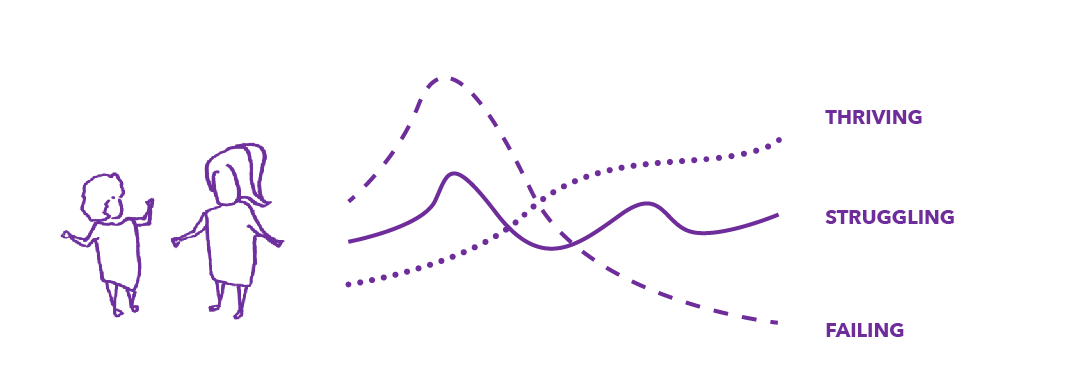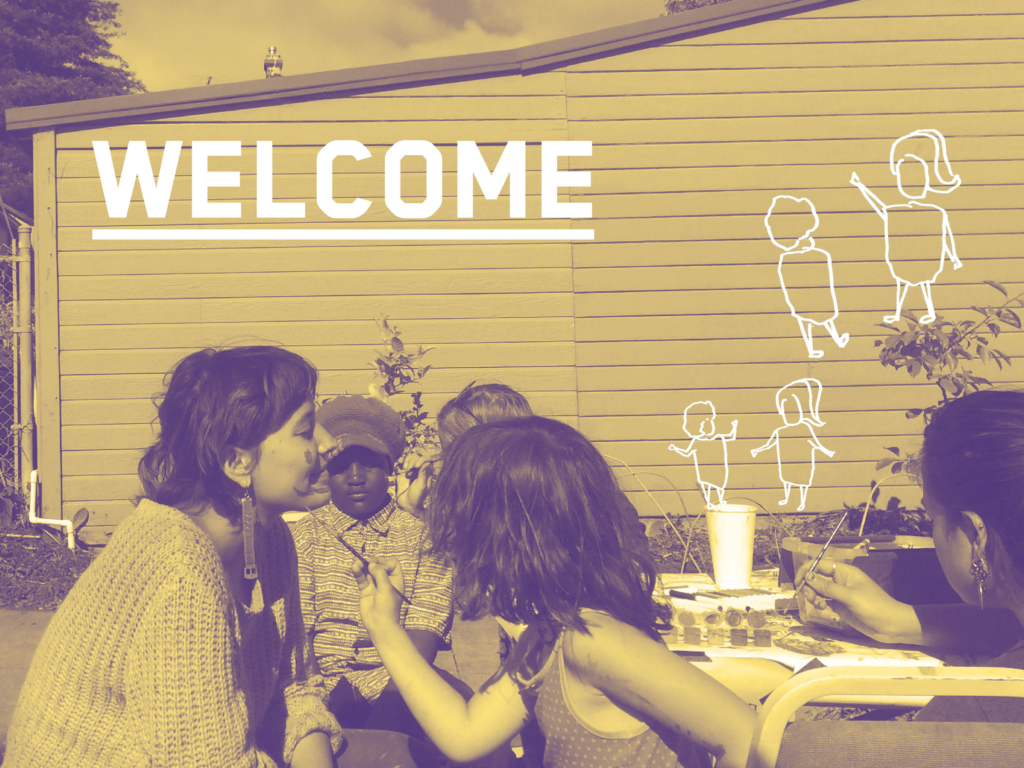Why do some community spaces thrive while others struggle or fail? A lot of it comes down to how people are welcomed. Last April, I joined a group of activists and academics in Madrid, Spain, to build software that helps communities self-organize. This group was part of the P2Pvalue project, a three-year research initiative that looked into what makes peer production sustainable.
To see things in action, I reached out to dozens of community spaces, from meditation centers to pop-up events. My visits, interviews, and workshops with organizers only brought up more questions: Why are the most thriving community spaces often led by volunteers? How do some spaces accomplish so much without the help of any digital tools? And what about these spaces made it possible to charge people either very little or nothing to participate?
At the end of August last year, I honed in on one space in particular: the PLACE for Sustainable Living, based in Oakland, California (an organization that has received a grant from Shareable). PLACE, as it’s known to friends and neighbors, is an experiential learning center. It’s a thriving space, where people cowork, garden, repair bikes, make art and music, and so much more. The organization gets people involved through a concentrated effort — a monthly “Action Day.” Every month, PLACE invites people to explore the space, connect with peers, and learn how they can join.
At PLACE, I learned a key lesson: Organizers can improve their community space simply by looking at where things break down in welcoming new people. Translating this and other lessons made it possible for the group in Madrid and me to build a better self-organizing platform. It is now online at https://teem.works and serves dozens of communities. But software is just one kind of tool and is not accessible or useful for everyone.
To create another tool for community spaces, I repurposed the stories, data, and cartoons from the software development process and created a guide and worksheet to help community space organizers welcome people. Here are key points from the guide:
1. What Happens When Someone Shows Up
Welcoming new people is the first step to getting them involved in the space — first impression matters. The next steps after welcoming can lead to three different outcomes: failing, struggling, or thriving.
- Failing — The community space is a one-time stunt. At first, it enjoys waves of excited visitors — a grand opening party, friends inviting friends, and more. But without organizers showing the work behind the scenes or asking people to get involved, only a few people offer to help and fewer end up actually helping. Sooner or later, the space closes.
- Struggling — A group manages to keep its space open. Organizers spread the word about activities and projects and open decision-making meetings to the public. Once in awhile, someone “gets it” and takes initiative. They might do neighborhood outreach or balance the books. But without defined roles and responsibilities, even for the core group of organizers, participation is unpredictable and limited. Managing the space involves all kinds of unexpected, unsteady work.
- Thriving — The healthy, sustainable participation most groups hope for. A critical mass of volunteers show up to help at the community space one day, thanks to word-of-mouth, an article with a call to action, or good timing. After a positive experience, many volunteers come back. Some become active organizers, taking on defined roles and responsibilities. The space grows organically.
In all three of these cases, different practices might lead to better outcomes.
2. Principles For Welcoming People
How can organizers lift up the vision and values of their community space without shutting down volunteers who bring new perspectives and capacity? The two principles of alignment and affirmation can help turn frustrating questions into productive conversations. This helps bridge the gap from a visitor to a volunteer.
- Find alignment. Work towards a common goal by integrating diverse opinions instead of rejecting them. For example, when people are in alignment, they listen to and respect one another — any stakeholder can support a decision even when they have concerns.
- Offer affirmation. Encourage and support people, especially as they try new things and take initiative. For example, organizers can encourage everyone to help — even if they fail at first — by sharing positive stories and recognizing effort.
3. Improve a Space by Making it More Welcoming
One way to explain what happens in welcoming new people at a community space is to break it down into three steps:
- Visiting and getting curious
- Trying and seeing connections
- Joining and making a commitment
To help understand these steps in action, let’s use the PLACE for Sustainable Living as a case study:
- Visiting
- Goal: To help people experience the vision of the space.
- Action: Help people get curious and explore instead of simply explaining how things work.
- Example: Because PLACE is dedicated to spreading its model, it invests heavily in making visits a positive experience by hosting a monthly Action Day, when people can see everything for themselves.
- Trying
- Goal: To help people imagine being part of the community and understand its priorities.
- Action: Create ways for people to connect with opportunities instead of just matching skills and tasks.
- Example: PLACE has a vision of resilience that combines self-sufficiency and mutual aid. People become stronger by supporting one another. Getting a real taste of that experience is key for new people to believe another way of life is possible. It also adds capacity to get work done.
- Joining
- Goal: To grow participation in a healthy way and minimizing growing pains.
- Action: Make it easy for new people to commit and come back.
- Example: Stewardship is essential to the way PLACE runs. Its organizers are actually called “stewards” and they take responsibility for everything from facilities and administration to education and events. More broadly, PLACE is organized as a set of groups called “pods” where stewards and others collaborate. Joining the space happens through these pods, where people can propose a project they bring with them (like a pedal-powered pasta maker) or simply work until inspiration strikes.
4. Practice Makes Progress
In community spaces, welcoming people often leads to collaborations on projects that keep everything growing and thriving. However, some people may never feel welcomed in a space. Progress means returning to these issues time and again — for example, by continually developing community agreements, a statement of solidarity, or a set of policies. This is where the principles of alignment and affirmation matter most, because they emphasize the role of practice in bringing intentions to life.
Please fill out this form to get the complete guide and worksheet:
If you use this guide and worksheet, let us know how it goes — email danny@peakagency.co.









